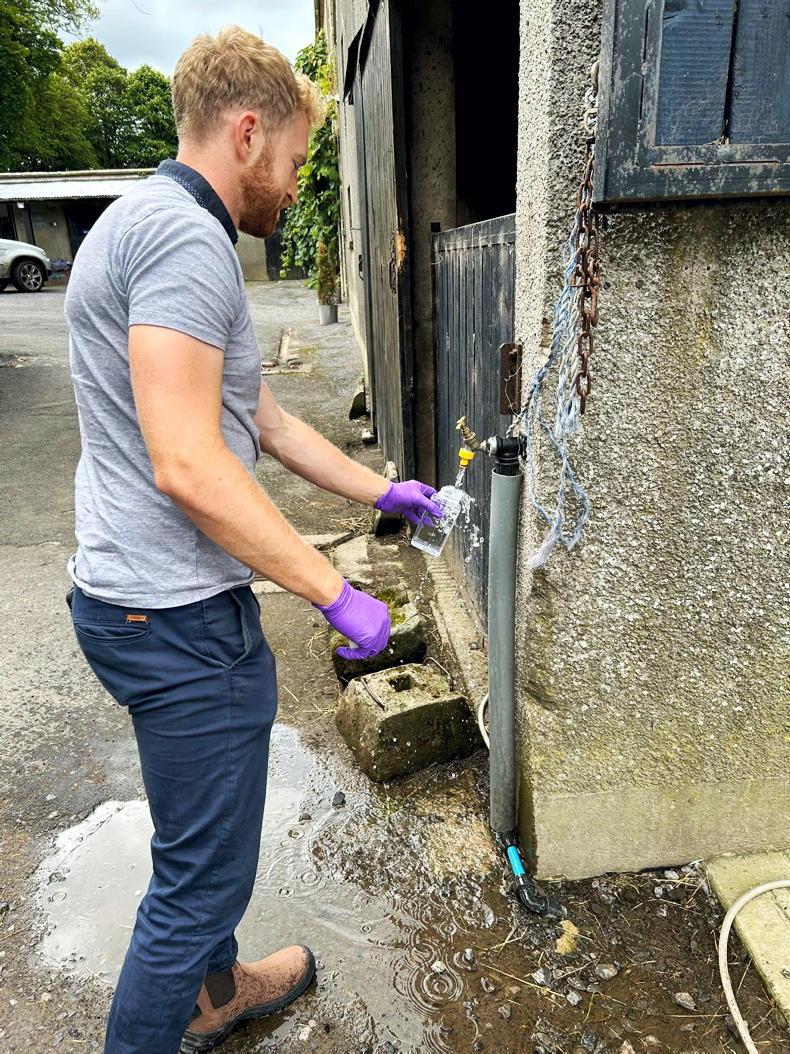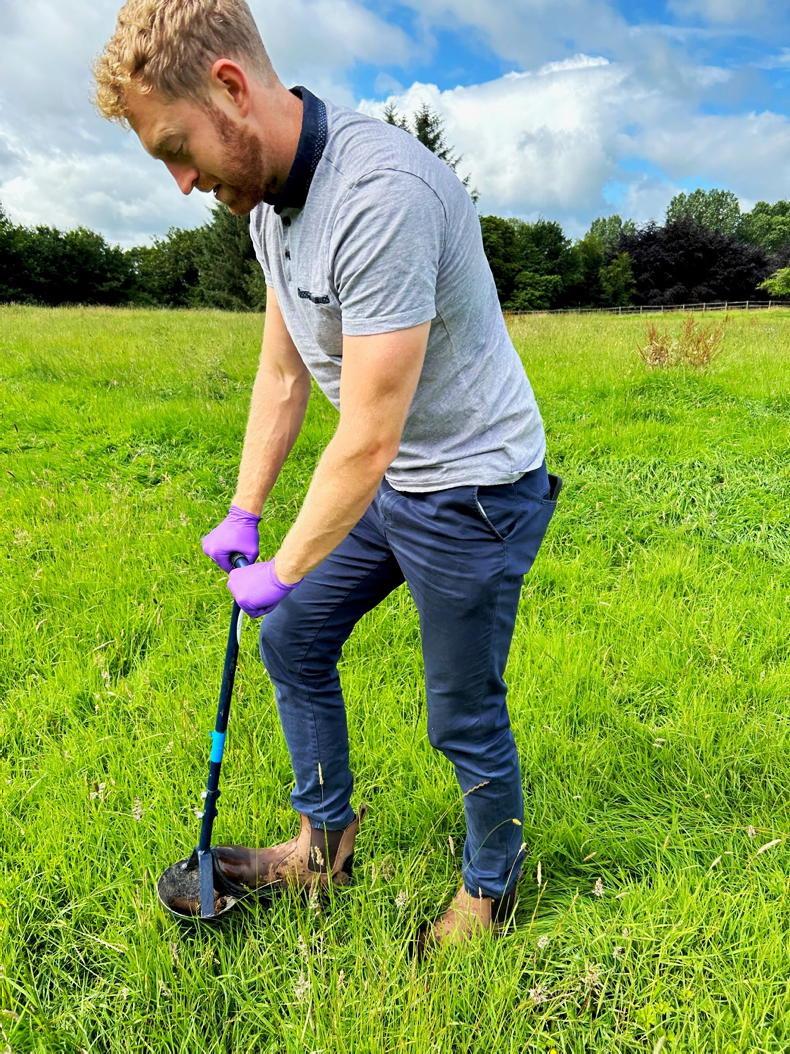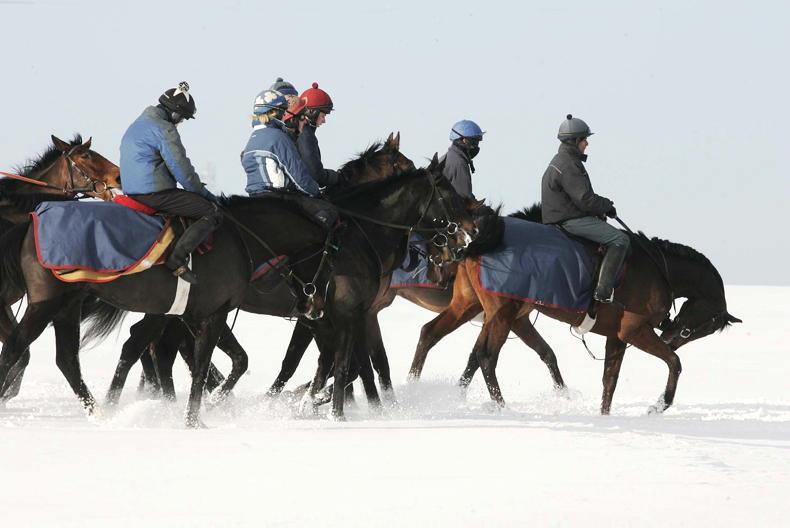IN April I made a trip to the labs of the Irish Equine Centre (IEC) for Horse Sense to have a chat with agricultural scientist Shane Browne about the services and packages IEC offers for equine farmers. The IEC is an independent, not-for-profit organisation and they offer an extensive range of services supported through five units: clinical pathology, pathology, microbiology, virology, environment and nutrition.
As well as providing vital health diagnostics for horses (and other animals), these services provide the facts and figures which can help equine farmers and owners make informed decisions on their farms.
Saving
IEC currently runs a Land Assessment for Stud Farms programme in a helpful initiative for Irish Thoroughbred Breeders Association (ITBA) members. The discounted package costs €150, saving over 50%. IEC also offer a comprehensive Stud Farm Hygiene package which includes nursery paddock assessment and testing. The scheme is worth €525 (inc VAT), and is subsided through National Breeding Services. Applicants are required to pay €125 to HSI for this scheme.
Having both sports horses and thoroughbreds at my yard, I booked both packages and on a warm day at the beginning of June, Shane visited our yard to take the necessary samples. I currently have five mares and three young fillies and three foals on the way for 2024, however there is no limit on the stock size for the testing.
Water sampling
Included in the Land Assessment package, composite grass sample testing was undertaken as well as minerals and antagonistic minerals (minerals which when too abundant work negatively to draw out good minerals from the soil). The package also included water sampling for bacteriology and a mineral profile, plus soil analysis for PK pH and lime requirement (other soil tests can be taken on request also).
Shane took samples of the horses’ drinking water, the foaling boxes, the feed room and will analyse samples of hard feed and fodder (my haylage wasn’t yet made so I will send it in). We walked the farm and yard, and he explained what he was doing along the way. The various soil and grass samples were bagged up and the swabs and other tests were secured as soon as they were completed. The whole process only took less than an hour.
The samples were taken back to be analysed at the IEC and in around ten days, the results came back to me via email. There were a couple of things that came back in the three-page Land Assessment report, which was full of really useful advice and recommendations.
The first issue was the level of some of the available minerals, which are essential for reproductive and developmental health, were low in the grass sample. Magnesium, zinc, sodium, cobalt, and iodine levels were low. The report was very clear and confirmed that for now, appropriate supplementation of the horses is required.
Also in the observations was the fact that one of my grazing fields is low in phosphorous and potassium. The advice given was to target the field with any available organic manure. I was also reminded to be aware while spreading any form of fertiliser (chemical or organic) in this field to observe the two-metre buffer zone from the stream which runs along it.
The report suggested if there was no organic matter type fertiliser available (slurry etc.), to apply 10.10.20 or equivalent at a rate of two bags per acre and repeat in September. Also, if the grass quantity requires increasing at any stage, to apply one bag per acre of 10.10.20, 18.6.12 or even Richland Sweetgrass or equivalent and repeat in September if necessary.
Copper
Where my soil is concerned, there are high levels of molybdenum in the grazing paddocks, which Shane explained pulls copper from it. I learned that it wouldn’t be a good idea to lime as this raises the pH, which in turn increases the availability of the molybdenum. I had only heard of molybdenum briefly before from my initial visit to IEC and so was appreciative of the more in-depth explanation in the feedback as to why it’s an issue for my fields and my horses.
According to the report, ‘in general, liming soil will reduce the availability of heavy metals in the grass, but the exception to this rule is areas high in molybdenum. If a soil is high in molybdenum, then this will reduce the availability of copper and manganese in the grass. The excessive levels prevent animals, and especially horses with their badly designed digestive system, from absorbing copper and manganese. Copper is essential for efficient renal function, and manganese is required for extracting energy from forage. Supplementation of copper and manganese is recommended when grazing high molybdenum areas.’
Bacteria
In the Stud Farm Hygiene results, there was only one issue flagged up in the eight-page report and that was that the nursery paddock tested positive for the pathogenic bacteria Clostridia. Sounded pretty scary but the feedback and recommendations from IEC made it much less so, and they equipped me with the advice I needed to manage the presence of the bacteria. According to the report, ‘Clostridia is soil borne and can cause severe scour in foals. There is not much that you can do to eradicate it from grass paddocks and therefore paddock maintenance is key in these cases. Aim to avoid poaching and bare areas by fencing off spaces like this to encourage grass growth.’
The advice was to add stone to areas prone to poaching/getting bare such as gateways and around troughs and additionally, if the paddocks get very wet and dug up, to wash the mares’ legs when bringing them back in to the stabling. The report also advised I wash the mares’ udder when lactating, if the paddocks are very cut up. This helps to lower the exposure to Clostridia for the foal.
The report stated I have sufficient nursery paddocks on the farm and went on to advise I ensure they are rotated, and rested periodically. A recommendation for cross-grazing with cattle and sheep to help with consistency of grass cover and parasite control was also included.
There was so much helpful information given in the reports I couldn’t possibly cover it all here, but suffice to say I need no convincing that farm testing such as this should be on everyone’s to do list.


 This is a subscriber-only article
This is a subscriber-only article
 It looks like you're browsing in private mode
It looks like you're browsing in private mode











SHARING OPTIONS: